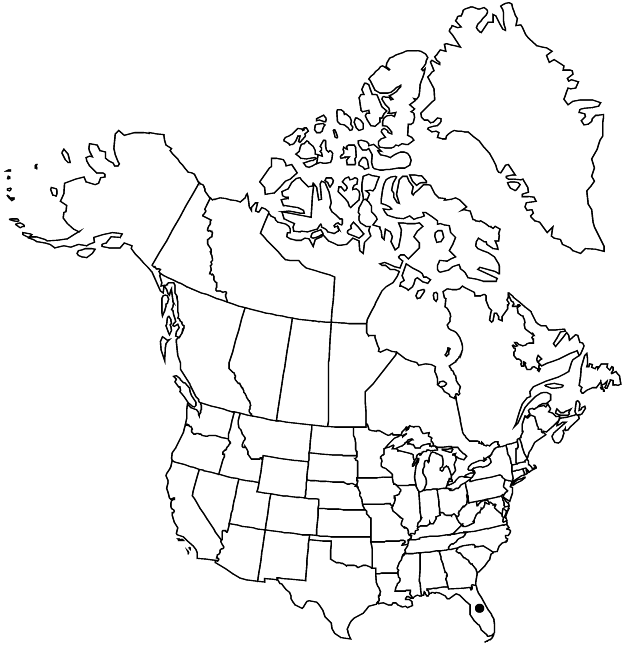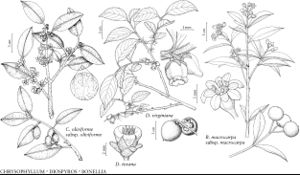Difference between revisions of "Chrysophyllum oliviforme subsp. oliviforme"
Treatment appears in FNA Volume 8. Treatment on page 246.
imported>Volume Importer |
imported>Volume Importer |
||
| Line 42: | Line 42: | ||
|publication year= | |publication year= | ||
|special status= | |special status= | ||
| − | |source xml=https:// | + | |source xml=https://bitbucket.org/aafc-mbb/fna-data-curation/src/2e0870ddd59836b60bcf96646a41e87ea5a5943a/coarse_grained_fna_xml/V8/V8_509.xml |
|genus=Chrysophyllum | |genus=Chrysophyllum | ||
|species=Chrysophyllum oliviforme | |species=Chrysophyllum oliviforme | ||
Latest revision as of 22:44, 5 November 2020
Twigs russet, older twigs grayish. Leaves: petiole 5–10 mm; blade broadly elliptic to ovate, (13–) 30–120 × (6–)15–40(–67) mm, marginal vein distinct, surfaces abaxially coppery-hairy, becoming grayish with age, adaxially glossy green. Inflorescences 2–10-flowered or flowers solitary. Pedicels 3–8 mm, sericeous-tomentose. Flowers: sepals broadly ovate, 1.5–2 mm, margins ciliate, apex ciliate; ovary 0.5–1 mm. Berries 14–30 mm. Seeds elongate, 13–15 mm; hilum ca. 1/3 seed length. 2n = 52.
Phenology: Flowering mostly late summer (sporadic throughout year).
Habitat: Hammocks, scrub and wet thickets, frequently on coquina, coral, sandy and shelly soils
Elevation: 0-5 m
Distribution

Fla., West Indies (Bahamas, Cuba, Hispaniola, Jamaica, Puerto Rico).
Discussion
Chrysophyllum oliviforme is a handsome tree that is frequently cultivated.
Selected References
None.
Lower Taxa
None.
